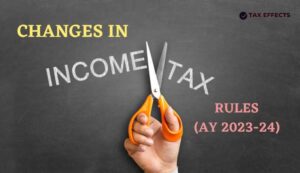
Income Tax Audit – Meaning, Applicability, Objective, Due date of filing tax audit, Penalties for not filing
In this article, we will discuss in detail about Tax Audit & its applicability under Section 44AB of the Income Tax Act, 1961. Tax Audit
Home » Tax

In this article, we will discuss in detail about Tax Audit & its applicability under Section 44AB of the Income Tax Act, 1961. Tax Audit

In this article, we will discuss about the difference between Financial Year (FY) & Assessment Year (AY) & changes made in the income tax rules

In this article, we will discuss Debenture, its feature, types, advantage & disadvantage. What are Debentures? A debenture is a type of bond

In this article, we will discuss about Investment Strategy for Beginners. Investment Strategy for Beginners As an investor, you need to follow the

Taxability of Gifts received by an Individual or Hindu Undivided Family (HUF) Any sum of money or property received by an individual or a

In this article, we will discuss the Thumb Rule of Investing. Thumb Rules of Investing In terms of investing, there are certain thumb rules

In the last part of this summary, we have learned about the basic meaning of TDS, some concepts which were very useful and commonly applied


In this article, we will discuss about the difference between Financial Year (FY) & Assessment

In this article, we will discuss Debenture, its feature, types, advantage & disadvantage. What

In this article, we will discuss about Investment Strategy for Beginners. Investment Strategy for



It is always the knowledge which makes people empowered. Therefore, our effort through this website is to help others by sharing knowledge which is useful for them.
We provide tax related articles which is useful for various stakeholders starting from Students, Traders, Tax Practitioners, and the public at large.